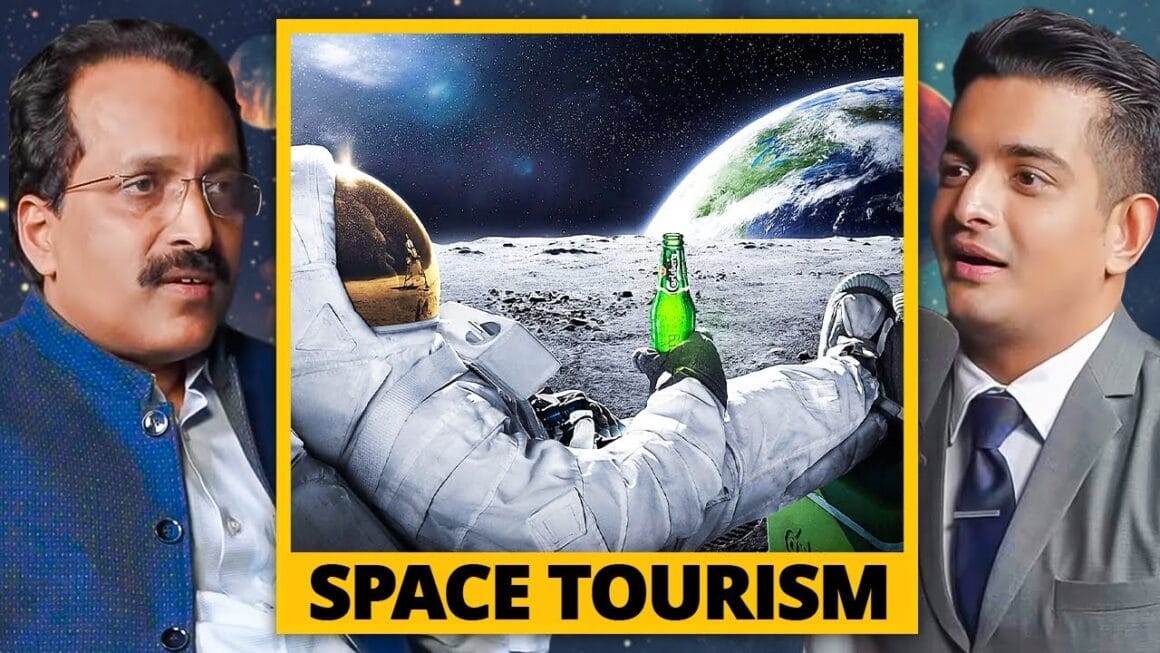For years, going to space was a distant dream for most Indians, reserved for ISRO astronauts and a few foreign missions.
Today, space tourism is a fast-approaching reality, with Indians already securing seats on private missions and domestic options on the horizon.
If you’ve ever wondered “Will I be able to go to space in my lifetime?”, here’s a clear look at costs, timelines, and options.

Global Space Tourism Landscape
Suborbital Flights
These flights offer a few minutes of weightlessness near the Kármán line (~100 km above Earth).
- Virgin Galactic:
US $600,000 per seat (₹5 crore). - Blue Origin: Similar pricing, with a recent auction for an Indian participant reaching US $2.5 million (~₹20 crore).
Orbital Flights
For those seeking multi-day stays aboard the ISS:
- Axiom Space + SpaceX: US $70 million (~₹580 crore) for training, launch, and a two-week stay in orbit.
- India’s Shubhanshu Shukla recently became part of such a mission, showing feasibility for Indians.
India’s Domestic Space Tourism Plans
ISRO’s Suborbital Tourism Vision:
- Developing India’s first reusable suborbital tourism module, targeting a launch window around 2030.
- Expected pricing: ~₹6 crore (~US $700,000) per tourist, providing astronaut training and spaceflight experience.
Gaganyaan Crewed Vehicle:
- ISRO’s Gaganyaan missions in 2027–28 will validate crewed low-Earth orbit capabilities, laying the groundwork for future tourism missions.
Private Players:
- Supported by IN-SPACe, enabling private space activity under ISRO’s oversight.
Market Potential for India’s Space Tourism
- In 2023, India’s space tourism sector was valued at US $11.2 million.
- By 2030, it is projected to reach US $137 million, with a CAGR of ~43%.
- Rising HNI interest, falling launch costs, and domestic tech capabilities will drive growth.
Timelines & Cost Breakdown
| Tier | Option | Timeline | Estimated Cost |
|---|---|---|---|
| A | ISRO Suborbital Flight | By ~2030 | ₹6 crore (~US $700k) |
| B | Virgin Galactic / Blue Origin | Available now | ₹5–20 crore |
| C | Orbital Missions (Axiom + SpaceX) | Available now | ₹580 crore (US $70m) |
How to Prepare for Space Tourism as an Indian
✅ Financial Planning:
- Begin SIPs or high-yield investments if you aim for a ₹6 crore ticket in the 2030s.
- Consider life and health insurance with clauses covering high-risk activities.
✅ Physical Fitness:
- Space tourists undergo medical evaluations and basic physical fitness tests.
- Light endurance and strength training are advisable.
✅ Research Platforms:
- Follow ISRO, IN-SPACe, Skyroot, and Agnikul for India-based options.
- Track updates from Virgin Galactic and Blue Origin for immediate suborbital opportunities.
Role of Private Indian Startups
Skyroot Aerospace
- Developed Vikram-S, India’s first private rocket.
- Plans for reusable rockets and potential suborbital services.
Agnikul Cosmos
- Building small-lift launch vehicles.
- Potential for future human-rated missions as technology matures.
Dhruva Space, Bellatrix Aerospace
- Supporting satellite deployment and propulsion tech that may synergize with tourism ventures.
How Social Media is Fueling Interest
- Instagram, YouTube, and X (Twitter) are educating young Indians about space tourism.
- Influencers and channels like Curious Harish, Prateek Singh, and ISRO’s official pages demystify space travel.
- Announcement reels of launches, astronaut experiences, and training snippets keep the hype alive.
Final Thoughts
Space tourism for Indians is no longer a distant dream.
From upcoming ISRO missions to active global options, your chance to view Earth from space could be within reach if you plan ahead.
Space tourism is no longer a distant dream for Indians.
With ISRO’s evolving capabilities and private players entering the race, the vision of experiencing zero gravity and viewing Earth from space is within reach for those who dare to dream.
CONCLUSION
For India’s aspiring space travelers, now is the time to stay informed, save, and prepare for a future where space travel is as real as an international vacation, opening a new chapter in India’s space journey and your personal bucket list.
FOR MORE BLOGS – beyondthepunchlines.com

 Add to favorites
Add to favorites








